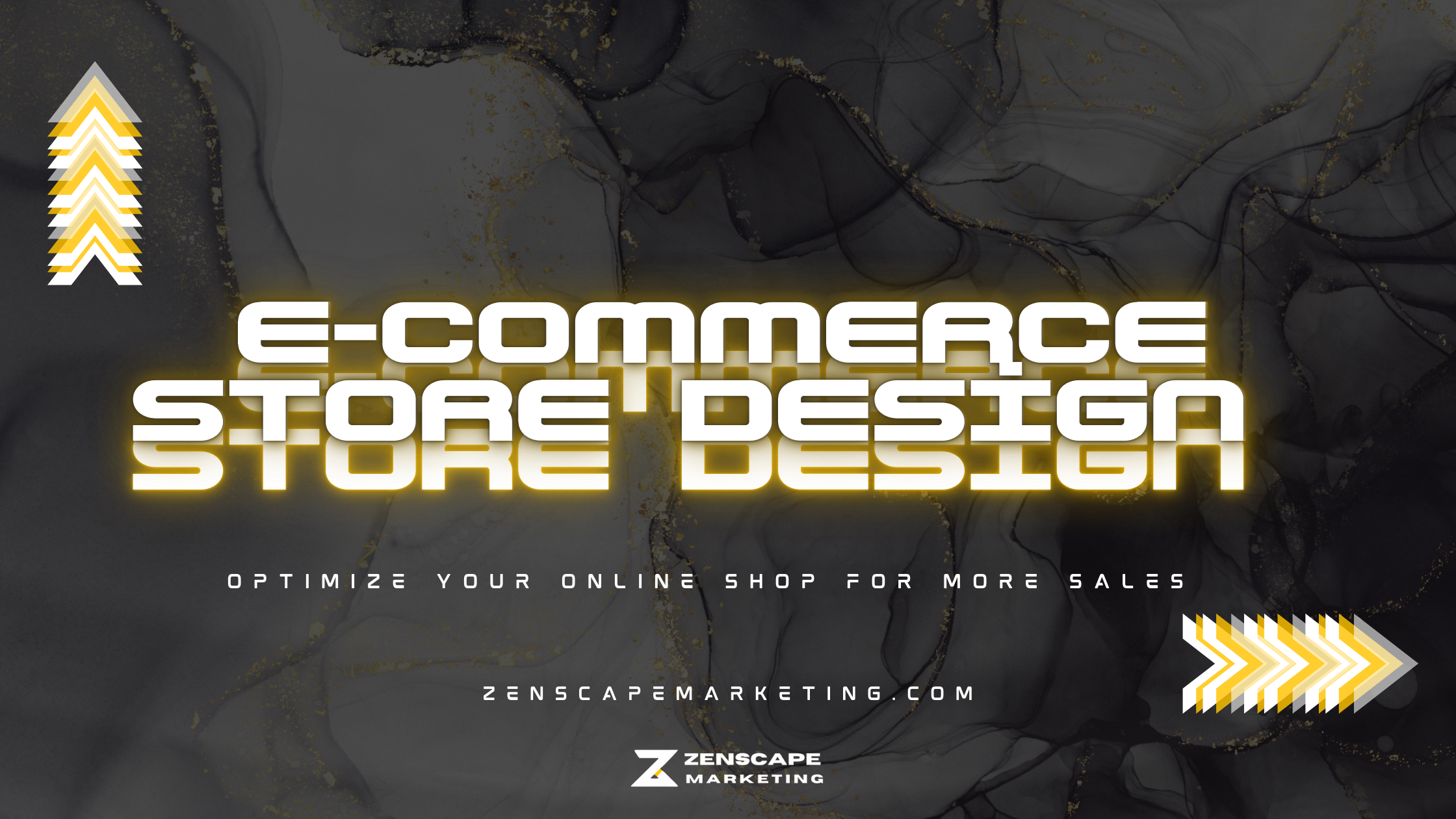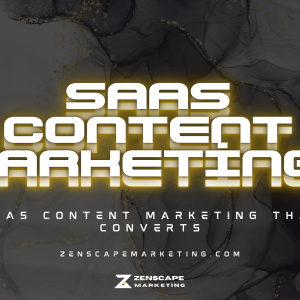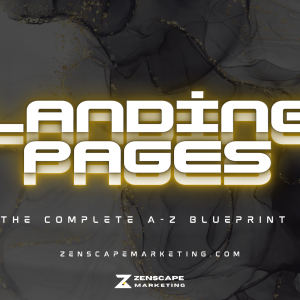An E-Commerce store design is one of the most important factors determining its success. A well-designed E-Commerce store invites customers in, establishes trust, provides an enjoyable user experience, and converts visitors into paying customers. However, many businesses don’t pay enough attention to crafting an effective eCommerce design. This results in lackluster conversion rates abandoned carts, and missed revenue opportunities.
This comprehensive guide will explore the key elements that optimize an eCommerce store’s design to drive more sales. You can create an online shop that sells by following these tips and best practices.
# Optimize Site Navigation For Effortless Browsing
Your eCommerce site’s navigation plays a crucial role in the shopping experience. If customers need help finding what they’re looking for, they’ll quickly leave your store.
Some best practices for optimizing navigation include:
– Simple, clean menu layout. Avoid cluttered or overly complex navigation menus. Keep it scannable and easy to use.
– Intuitive category structure. Organize products logically into categories and subcategories that make sense from a customer’s perspective.
– Seamless search functionality. Allow customers to search for products by relevant keywords and parameters quickly.
– Consistent positioning across pages. Place primary navigation links in the same spot on every page for usability.
– Responsive design. Navigation should adapt seamlessly on mobile devices. Test responsiveness thoroughly.
– Breadcrumb trails. Add breadcrumb navigation so customers can retrace their steps.
– Focus on the most important links. Prioritize top-level links customers will use most, like “Shop” and “Cart.”
By optimizing site navigation, you remove friction from the browsing experience. Customers can find products faster, increasing on-site time and higher conversion rates.
# Craft an Impactful Homepage That Sells
A homepage is like a storefront window – it needs to capture attention and interest. Implementing conversion-focused design principles on your eCommerce homepage can significantly influence sales.
Some effective strategies include:
– Compelling hero image. Use a visually stunning header image that connects with your brand identity and target audience.
– Clear value proposition. Summarize what your brand offers and why it matters in your headline and sub-headline.
– Strategic product displays. Curate selections of your best-selling or most popular products. Create urgency with notifications like “25% Off Summer Styles”.
– Social proof elements. Include customer reviews, testimonials, or brand logos to build trust and credibility.
– Clean layout. Avoid clutter. Use white space strategically to make key elements stand out.
– Strong calls to action. Place visible CTA buttons above the fold, prompting visitors to shop now or learn more.
– Carefully test variations. A/B tests homepage layouts, content, images, and CTAs to determine what converts best.
Fine-tuning a homepage design through constant testing and optimization is key for higher-converting eCommerce sites.
# Focus on High-Quality Product Images
Showcasing products in their best light through stellar photography is one of the most valuable investments for E-Commerce stores. Dynamic product images significantly influence consumers’ perceptions and purchasing behavior.
Some tips for product images that sell include:
– High-resolution photos. Invest in professional lifestyle photography and detailed product shots. Avoid cheap stock images.
– Consistent image styles. Maintain cohesive filters, lighting, angles, and framing across all product categories.
– Appealing backgrounds. Simple, clean backdrops help the product stand out. Creative sets can also work well.
– Multiple angles. Showcase each product from different vantage points and use cases. Videos can be great for demonstrating products, too.
– Focus on details. Zoom in on essential features, textures, materials, and embellishments.
– REAL model imagery. Use authentic images of real people interacting with products. Avoid overly polished perfection.
– Optimize image file size. Compress images without sacrificing quality to improve site speed.
Vivid product photography captures attention while building confidence in your inventory’s quality and appeal.
# Design an Intuitive Checkout Process
The checkout process is the make-or-break moment of truth for eCommerce purchases. Complicated or confusing checkouts lead to abandoned carts, so optimizing this part of the user journey is essential.
Here are some tips for designing a seamless checkout process:
– Limit steps- Try to keep checkout under 5 steps. Every additional field or page will cause drop-offs.
– Pre-populate info- Autofill customer and payment details when possible to skip extra data entry.
– Inline form layout- Keep the form on one page instead of separate pages to reduce abandonment.
– Accept guest checkout- Don’t require account creation, which adds unnecessary friction.
– Mobile optimization- The checkout must work smoothly on all devices. Prioritize mobile responsiveness.
– Payment options- Offer preferred, trustworthy payment methods. Provide alternatives like PayPal.
– Security cues- Include elements like the “lock” icon, certifications, and other trust symbols.
– Progress tracker– Display visual progress bars so customers know where they’re at in the funnel.
– Minimal distractions- Remove non-essential page elements during checkout so customers stay focused on completing their purchases.
# Craft Product Pages That Influence Buying Decisions
Product detail pages are where you can provide all the necessary information to incentivize customers to add items to their carts.
Follow these best practices when designing product pages:
– Engaging descriptions. Go beyond bulleted features. Craft compelling narratives and use storytelling to connect customers to products.
– Dynamic imagery. Incorporate zoom-in capabilities and multiple photos to showcase products. Add interactive elements when possible.
– Size charts. Include detailed size and measurement guides for categories like clothing and shoes to minimize returns.
– Customer reviews. Curate authentic positive reviews to inspire trust and address negative feedback professionally.
– Comparison tools. Allow customers to compare product variations like different colors and sizes easily.
– Inventory availability. Display real-time inventory numbers or notifications like “Only 5 left!” to prompt urgency.
– Complementary pairings. Recommend bundles, accessories, and complementary purchases to boost order values.
– Minimal clutter. Only include essential details on the page itself. Place non-critical info in expandable sections.
– Strong call to action. Use action-driven language like “Add to Cart” or “Buy Now” with a prominent button.
The more effectively you can tailor product pages to your offerings and customers, the higher your conversion rates will climb.
# Create Pages That Reassure and Build Trust
To convince online shoppers to make purchases, especially first-time buyers, you must establish credibility and convey trustworthiness through your website design.
Some elements that reassure customers and foster trust include:
– About Us page. Share your brand story, values, team, and achievements. Include photos and videos to humanize your business.
– Customer service options. Prominently display support contact forms, chat widgets, email addresses, and phone numbers.
– Blog or resources section. Demonstrate your expertise by sharing helpful advice, tutorials, product manuals, etc.
– Testimonials and reviews. Spotlight satisfied customer endorsements at strategic points like your homepage or product pages.
– Return policies. Explain your exchange, return, and refund policies so customers feel comfortable purchasing.
– Privacy/shipping policies. Address common questions and concerns around payment security, fulfillment, and handling private data.
– Awards and certifications. Feature badges from reputable organizations and industry standards you meet or exceed.
– Social proof. Tastefully showcase metrics like years in business, customers served, and social media followers.
Proactively address customer concerns through elements like these to provide the right assurances that lead to conversions.
# Optimize Site Speed and Performance
In today’s digital landscape, consumers have incredibly high expectations for site performance. Even minor delays or technical difficulties will quickly prompt visitors to navigate away from your eCommerce store.
Some tips to optimize speed and performance include:
– Streamline page size. Compress images, remove unnecessary code, and optimize pages for faster load times.
– Leverage caching. Use caching plugins to store elements and load pages more efficiently.
– Optimize product inventory. Limit options that rarely sell. Too many SKUs can slow things down.
– Upgrade hosting. Invest in robust, scalable servers and infrastructure to maintain speed.
– Improve code efficiency. Review back-end development approaches to identify and fix performance bottlenecks.
– Monitor site analytics. Use tools like Google Analytics to diagnose underperforming areas.
– Test on various devices. Continuously evaluate speed across different connections and screen sizes.
– Set speed targets. Establish page load time KPIs like sub-3 second loads for above-the-fold content.
Site speed significantly impacts bounce rates, conversions, SEO rankings, and more. Prioritize optimizations that enhance performance.
# Drive Repeat Visits Through Email Collection
Email marketing is one of the most effective strategies for driving repeat visits and sales. Collecting customer emails on your site lets you continue engaging shoppers through targeted campaigns long after they leave your online store.
Some tips for maximizing email sign-ups include:
– Offer incentives. Give discounts, exclusive content, or special offers in exchange for emails to increase sign-up rates.
– Strategically place opt-ins. Put email sign-up forms in locations with higher intent, like product pages, cart, and checkout.
– Keep forms simple. Only ask for essential info like email and name. Add more fields after capturing their email.
– Use pop-ups judiciously. Timed pop-ups when entering or before exiting your store can work but do just what is necessary.
– Send personalized welcome emails. Deliver value right away by customizing the first messages using merge tags.
– Make unsubscribing easy. Include one-click unsubscribe options on all emails so customers can opt out effortlessly.
– Monitor analytics. Review email metrics like open rates, click-throughs, and unsubscribe rates to refine your approach.
Collecting emails from site visitors allows you to drive repeated web traffic through promotions, content, and personalized messaging after they leave your store.
# Apply Principles of Visual Hierarchy
Effective visual hierarchy guides your customers’ eyes across important page elements in the intended order. Using contrast, whitespace, color, typography, and other design principles dramatically improve conversions.
Some tips for implementing visual hierarchy best practices include:
– Direct attention with contrast. Use dark colors against light backgrounds to attract focus towards calls-to-action and other clickable elements.
– Leverage whitespace. Surround key content with breathing room so it stands out rather than appearing cluttered.
– Guide with distinct fonts. Use typography strategically. For example, lighter fonts for general text, and bolder fonts for headings.
– Separate elements with space. Don’t cram content tightly together. Give layouts room to breathe.
– Establish direction with lines. Use lines, borders, and intentional dividers to direct eyes from top to bottom and left to right.
– Size indicates importance. Make important text and objects bigger than supporting content to denote priority visually.
– Limit color variety. Stick to one or two brand colors to create cohesion instead of distracting rainbow palettes.
These techniques help customers visually process the logical order of information on products and landing pages. Leveraging visual hierarchy principles in your eCommerce design results in higher conversion rates.
# Test, Experiment, and Refine Based on Data
The most effective E-Commerce sites continually experiment and evolve based on conversion data. Instead of guessing what works best, rely on split testing and user analytics to optimize your online store’s design objectively.
Some tips for taking a data-driven approach include:
– A/B test page layouts. Test entire page designs against each other to improve key pages over time.
– Experiment with page elements. Swap out headlines, images, buttons, testimonials, etc. to see what resonates most.
– Track user behavior. Use heatmaps and session recordings to understand how customers interact with your store.
– Monitor analytics. Pay attention to metrics like bounce rates, time on site, and exit pages to diagnose issues.
– Survey customers. Asking users directly through surveys and interviews can provide tactical insights.
– Run multivariate tests. Vary multiple elements like copy and images simultaneously for greater learning.
– Document results methodically. Maintain thorough documentation of tests, learnings, and future ideas to revisit.
– Change one thing at a time. Isolate variables properly so you know what truly impacted outcomes.
Relentless testing and optimization efforts enable eCommerce sites to provide the ideal user experience. Even minor design tweaks can produce surprising lifts in conversions when backed by data.
Is Your E-Commerce Design Costing You Sales? We Should Chat
An E-Commerce store’s design is pivotal in converting site traffic into satisfied, repeat customers. By focusing on excellent navigation, compelling content, dynamic product visuals, seamless transactions, and continually optimizing the site based on data, you can craft an online shopping experience that sells.
At Zenscape Marketing, our team specializes in the entire customer journey – from attracting initial traffic to optimizing on-site conversions through thoughtful, holistic design strategies.
We would love to discuss your E-Commerce store goals and explore how our comprehensive approach to digital growth could help take your online revenue to the next level. Let’s start a conversation today!






